ZHCSJI9A March 2019 – June 2019 BQ25886
PRODUCTION DATA.
- 1 特性
- 2 应用
- 3 说明
- 4 修订历史记录
- 5 Device Comparison Table
- 6 Pin Configuration and Functions
- 7 Specifications
-
8 Detailed Description
- 8.1 Overview
- 8.2 Functional Block Diagram
- 8.3
Feature Description
- 8.3.1 Device Power-On-Reset
- 8.3.2 Device Power Up from Battery without Input Source
- 8.3.3 Device Power Up from Input Source
- 8.3.4 Input Current Optimizer (ICO)
- 8.3.5 Buck Mode Operation from Battery (OTG)
- 8.3.6 PowerPath Management
- 8.3.7 Battery Charging Management
- 8.3.8 Status Outputs
- 8.3.9 Input Current Limit on ILIM Pin
- 8.3.10 Voltage and Current Monitoring
- 8.3.11 Thermal Regulation and Thermal Shutdown
- 8.3.12 Battery Protection
- 8.4 Device Functional Modes
- 9 Application and Implementation
- 10Power Supply Recommendations
- 11Layout
- 12器件和文档支持
- 13机械、封装和可订购信息
7.7 Typical Characteristics
CVBUS = 1µF, CPMID= 10µF, CSYS= 44µF, CBAT = 10µF, L = 1µH (DFE252012F-1R0) (unless otherwise specified)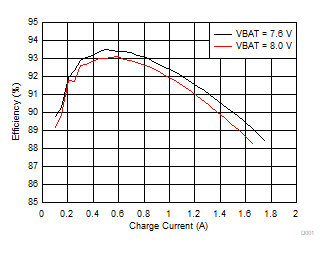
| VBUS = 5V |
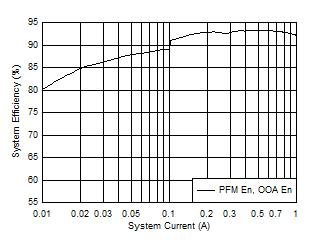
| VBUS = 5V | VBAT = 8.4V |
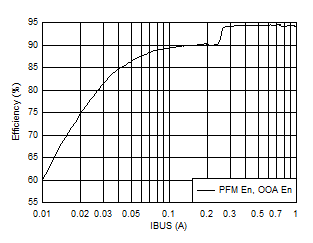
| VBUS = 5V | VBAT = 7.6V |
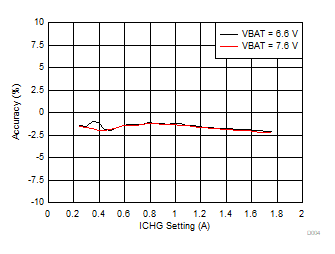
| VBUS = 5V |
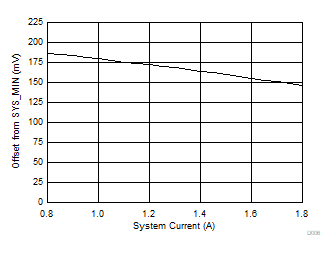
| VBUS = 5V | VBAT = 6V, EN_CHG = 0 | SYSMIN = 7V |
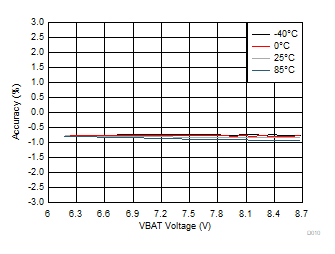
| VBUS = 5.1V | IBUS = 1A | |
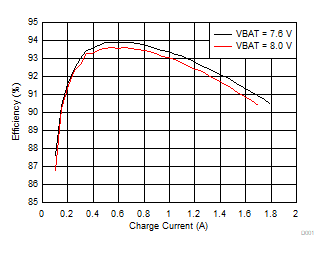
| VBUS = 5V | L = 1µH (IHLP2525CZER1R0k01) |
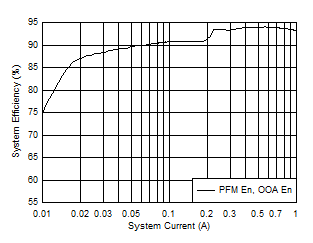
| VBUS = 5V | VBAT = 8.4V | L = 1µH (IHLP2525CZER1R0k01) |
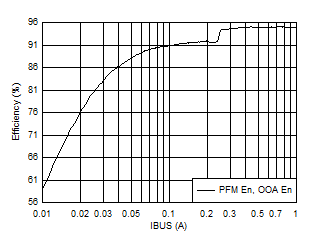
| VBUS = 5V | VBAT = 7.6V | L = 1µH (IHLP2525CZER1R0k01) |
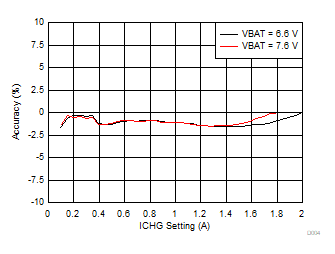
| VBUS = 5V | L = 1µH (IHLP2525CZER1R0k01) |
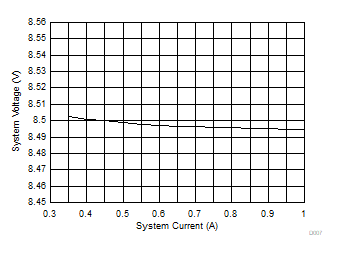
| VBUS = 5V | VBAT = 8.4V | EN_CHG = 0 |
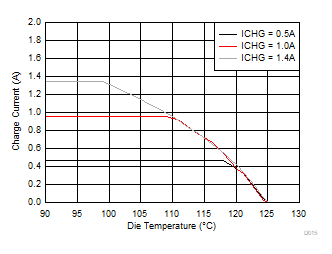
| VBUS = 5V | VBAT = 7.6V | ICHG = 0.5A, 1.0A, 1.4A | |
| Measured on 35-µm thick copper, 4-layer board | |||